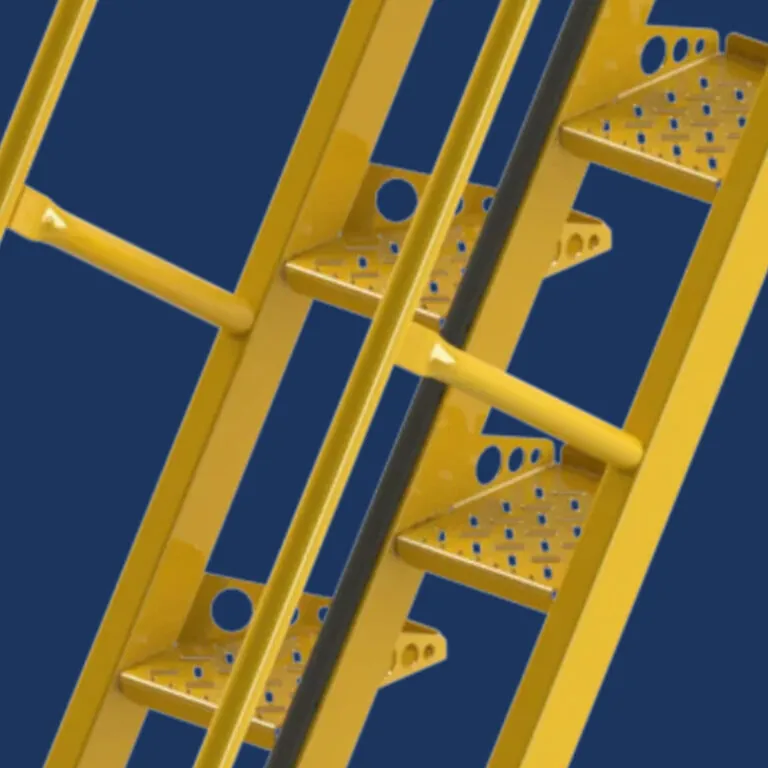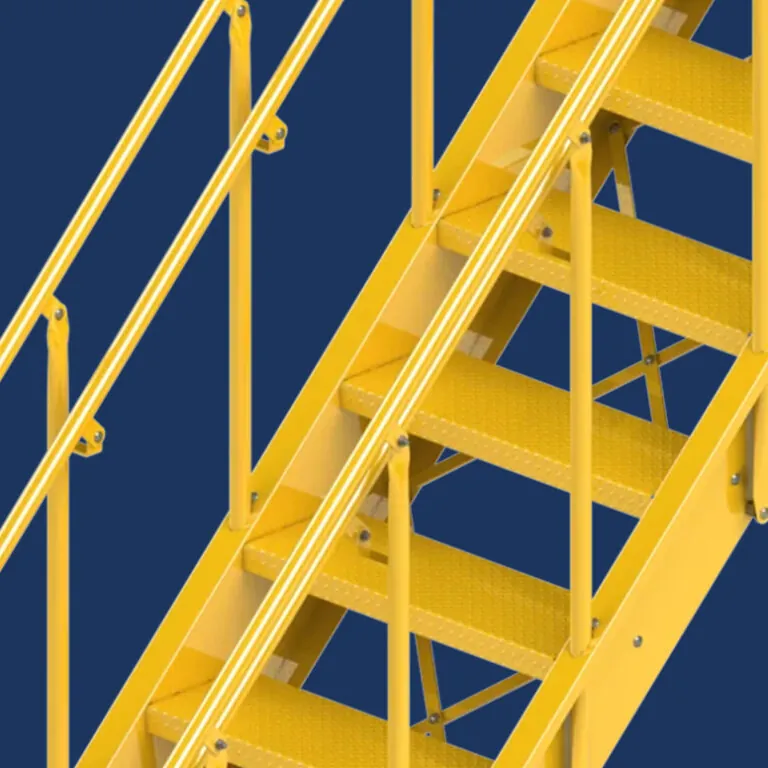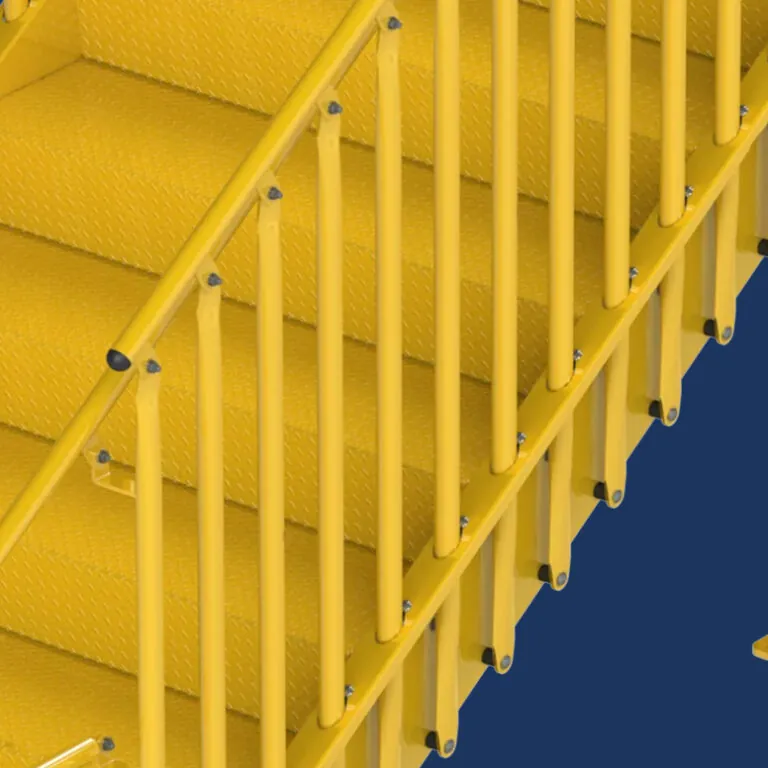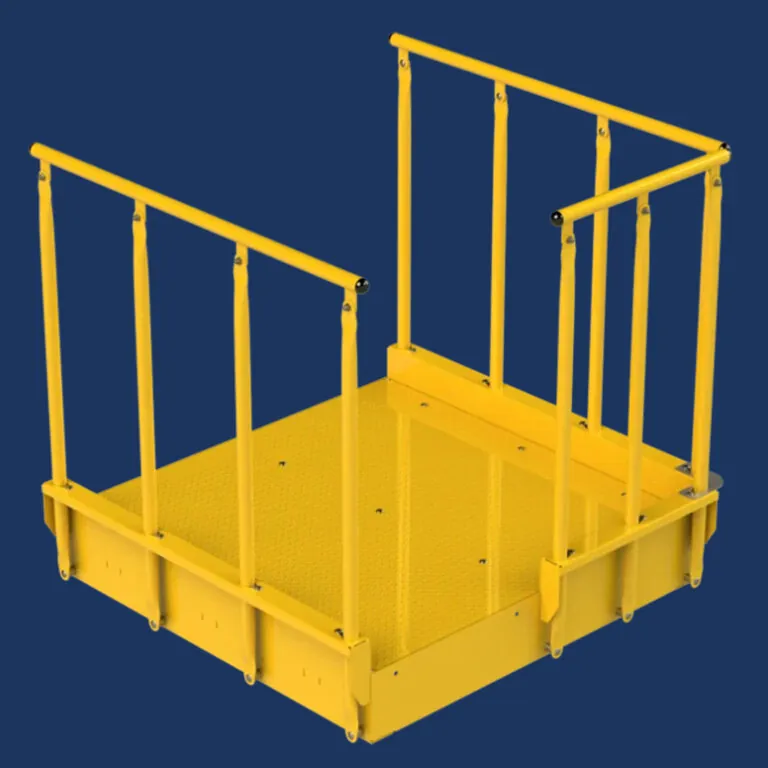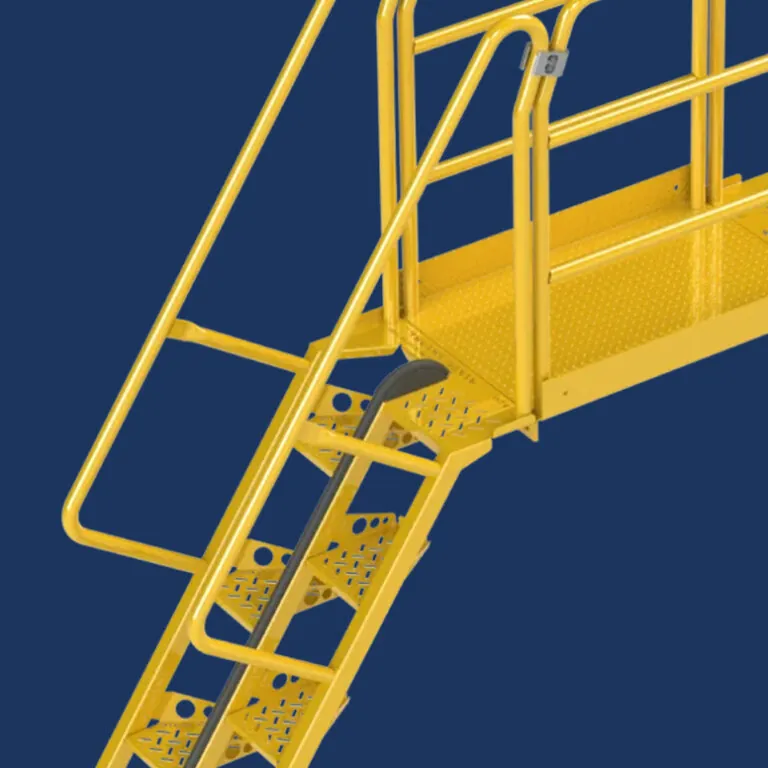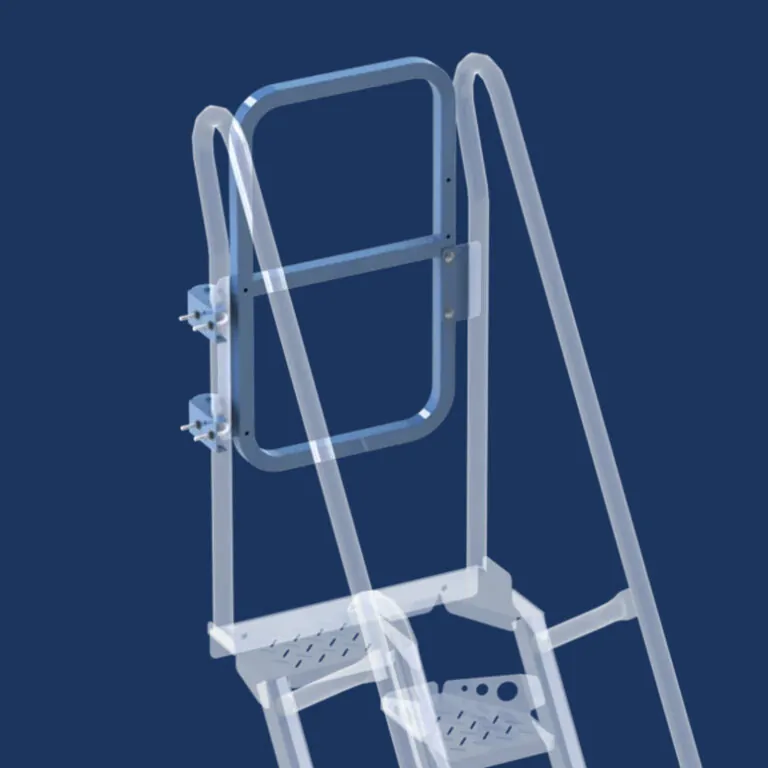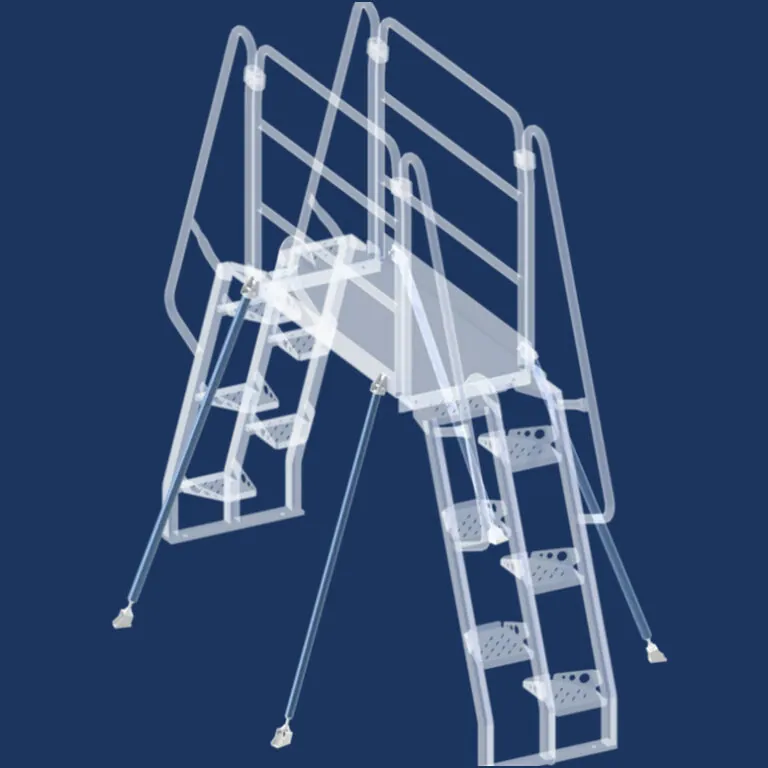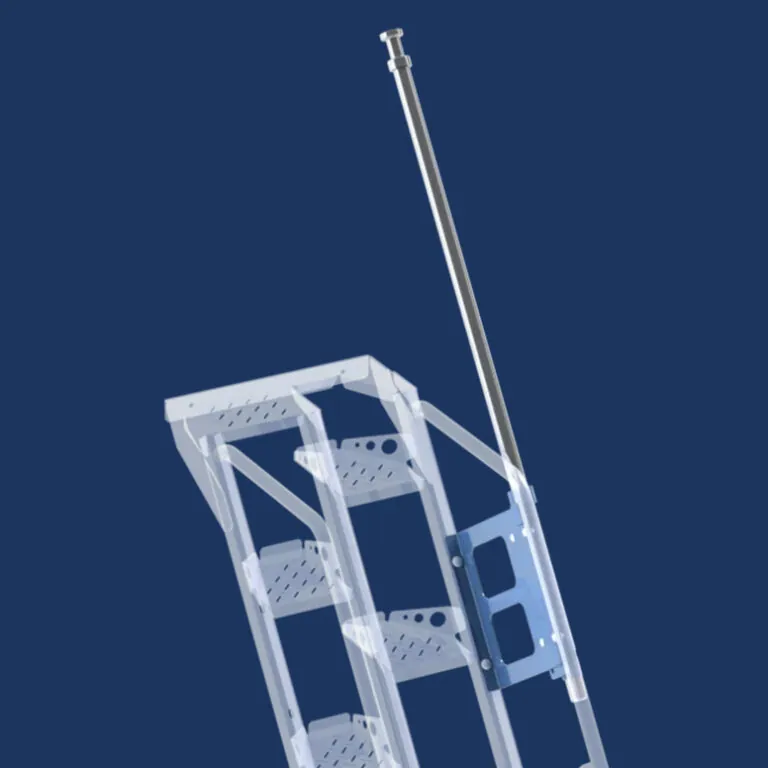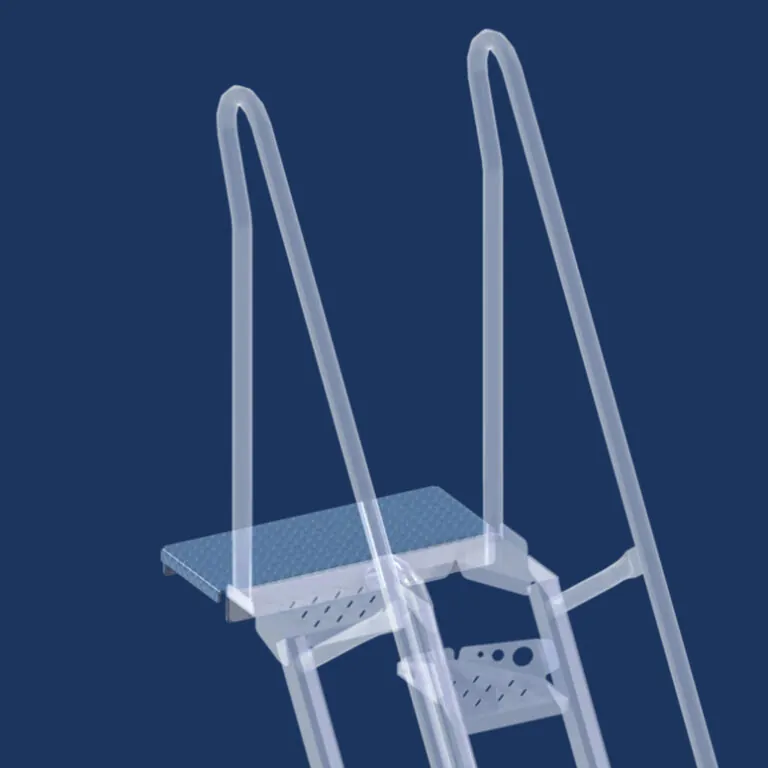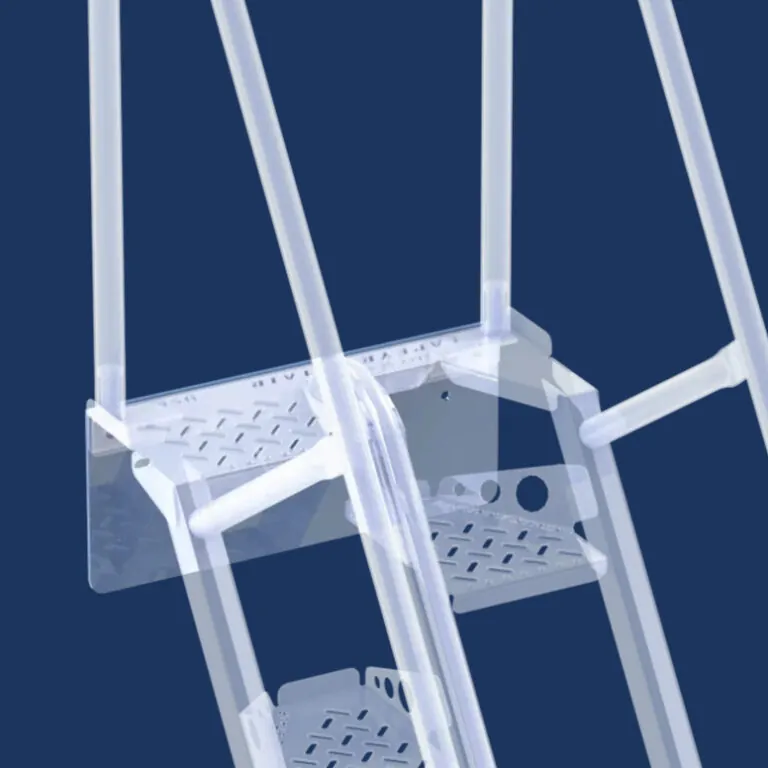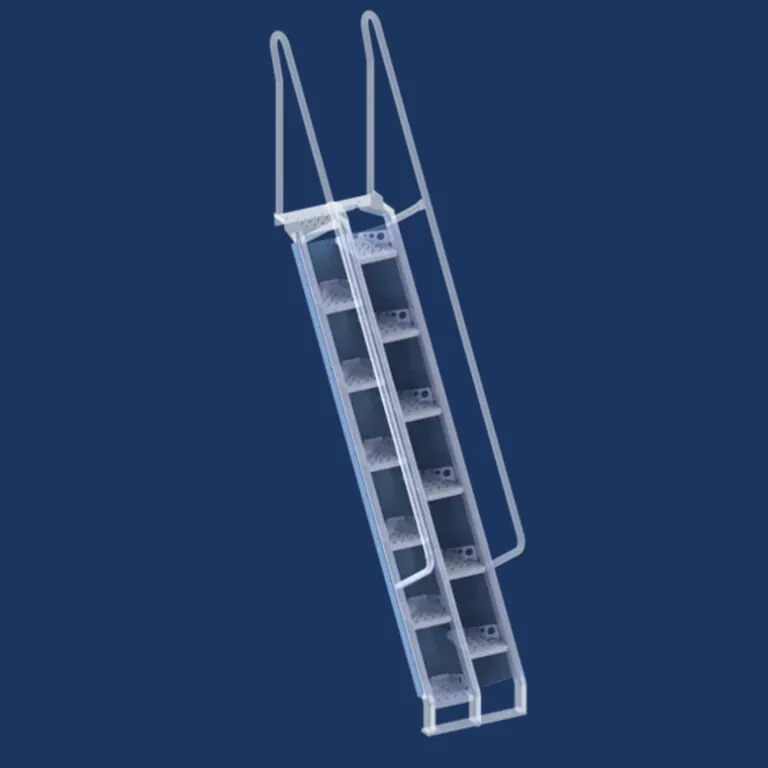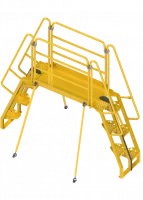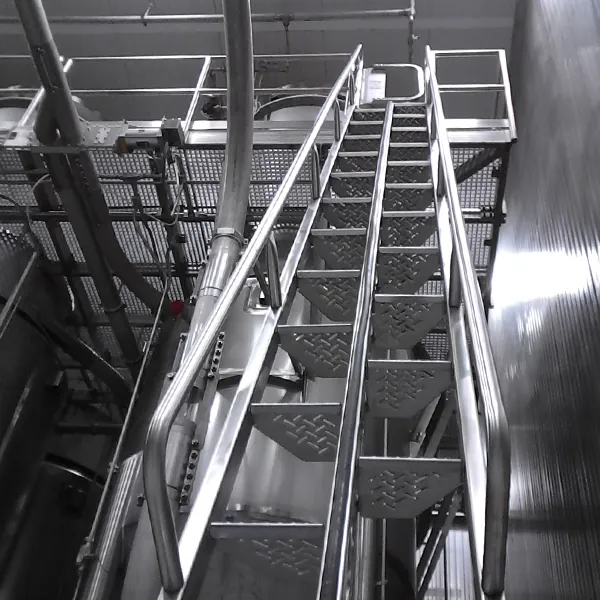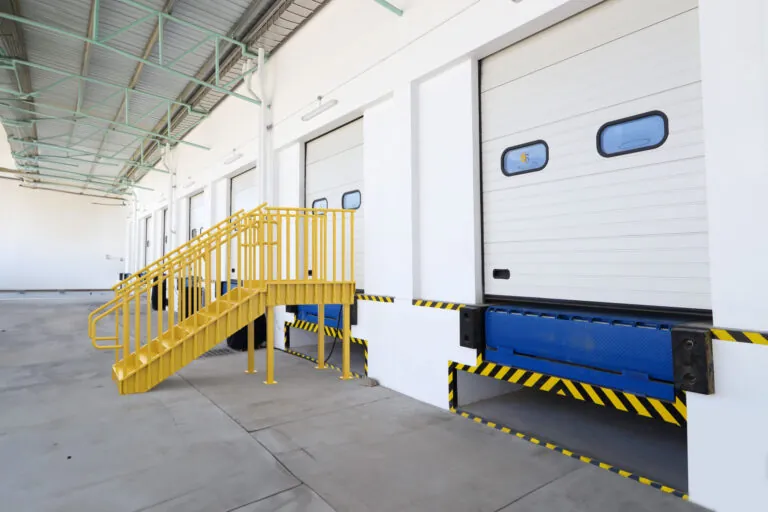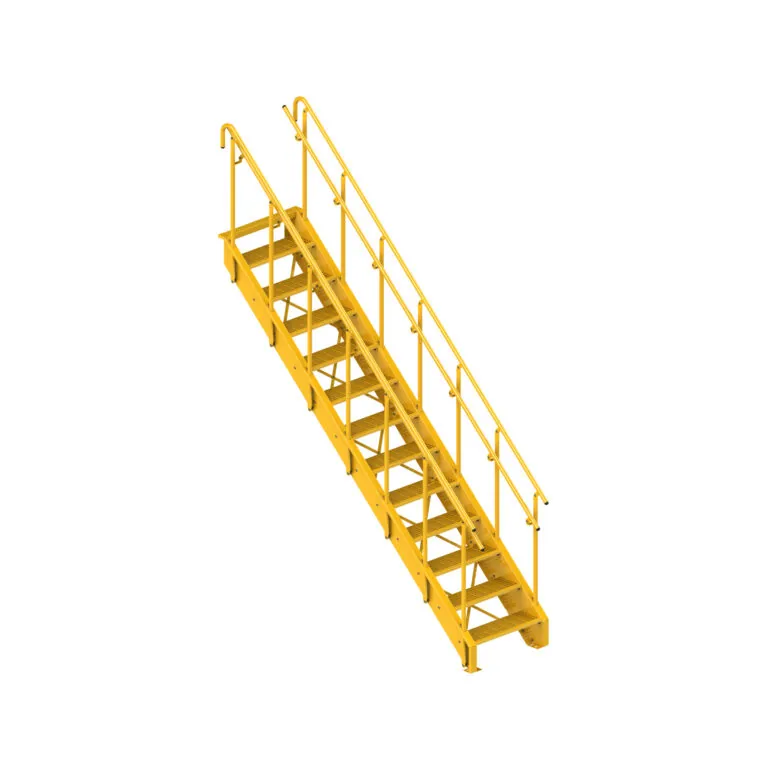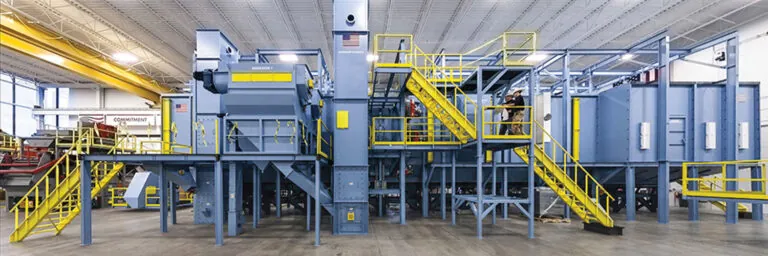Because of its general strength and durability, steel is a common choice for staircases in commercial and industrial environments. However, not all steel is the same.
Carbon steel, which Is dull and flat in appearance, is also vulnerable to corrosion. Often carbon steel is powder coated to increase its durability and appearance. In other cases, stainless steel, which is shiny and bright, may be used for certain applications.
This article will look at several factors to consider when choosing between powder coated steel vs stainless steel including price, durability, weather resistance and maintenance.
What is the difference between powder coated steel and stainless steel?
The difference between stainless steel and powder coated steel lies in the metals and processes used to create them. Powder coating adds a durable, protective epoxy or polymer layer over the steel, while stainless steel includes metal additives into the composition of the steel to improve durability and corrosion resistance.
Powder coated steel is typically made up of iron, carbon and other materials which can rust. To prevent corrosion, the base material steel can be powder coated with finely ground particles of pigment and resin. Powder coating is applied as a dry powder on the steel. Powder coating uses an electrostatic application process followed by a heated curing process in a curing oven. To create adhesion, the pigment and resin are charged with static electricity and then sprayed onto steel that is electrically grounded. To complete the coating process, the powder coating is then evenly melted and cooled into a thin, durable film which covers the steel.
Stainless steel is made through the same process as carbon steel. However, chromium, nickel, nitrogen and molybdenum are added to the iron and carbon to enable the steel to naturally resist corrosion. Chromium is essential to making stainless steel, which must contain at least 10.5% for the steel to qualify as stainless. Chromium reacts with oxygen in the environment to create a thin oxide film which protects stainless steel from rust. No additional coating is needed to protect stainless steel from corrosion.
Powder coated steel vs stainless steel comparison
| Comparison | Powder Coated Steel | Stainless Steel | Winner |
| Pricing | Less expensive | More expensive | Powder coated |
| Durability | Strong | Stronger | Stainless |
| Environmental issues | Last 15-20 years | Lasts over 100 years | Stainless |
| Rust and corrosion | Resistant | More resistant | Stainless |
| Finishes and textures | Wide range of colors and textures | Metallic shine with brushed or mirror textures | Powder coated |
| Care and maintenance | Easy | Easiest | Stainless |
1. Powder-coated steel vs stainless steel pricing
Stainless steel stairs are much more expensive than powder-coated steel stairs. The additional materials, including chromium and nickel, make stainless steel more expensive to produce. However, stainless stairs may be worth the investment in certain environments such as food manufacturing.
On the other hand, the benefits of powder-coating steel stairs are similar to the advantages of stainless steel stairs at a fraction of the price. In most temperate outdoor environments, powder-coated steel will hold up well. For indoor prefabricated steel stairs, powder coat is most often the best choice.
Winner: Powder-coated steel
2. Powder-coated steel or stainless steel for durability?
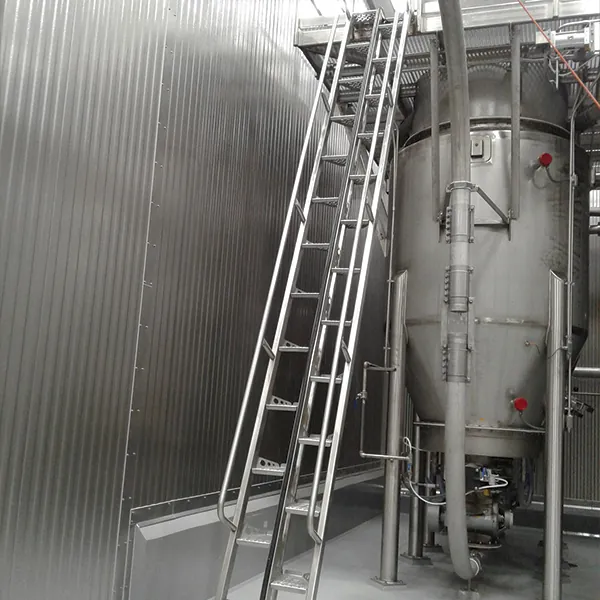 In general, steel is the most durable material that can be used for building staircases. Steel stairs have high tensile strength, meaning they are resistant to breaking under tension. Steel staircases can withstand heavy-weight loads and high traffic.
In general, steel is the most durable material that can be used for building staircases. Steel stairs have high tensile strength, meaning they are resistant to breaking under tension. Steel staircases can withstand heavy-weight loads and high traffic.
However, stainless steel has more hardening properties than carbon steel, making it less malleable and stronger than powder-coated carbon steel. In fact, stainless steel has one of the longest lifespans of any metal alloy.
Winner: Stainless steel
3. Powder coating vs stainless steel for environmental issues
Powder-coating steel can provide a color-durable finish that stands up to most environments. The high-density particles used in the powder coat form a protective layer over the metal which protects from dents and scratches. Powder coating also stops discoloration from the sun. However, powder coating typically lasts only 15-20 years, depending on the pre-treatment of the metal and the type of powder coating materials used.
The chromium in stainless steel makes it extremely resistant to damage from constant use. Stainless steel is able to withstand both high and low temperatures, varying from cold storage areas to hot outdoor environments. Stainless steel holds up well in sunlight and humid conditions. In fact, stainless steel is so resilient that it can last in almost any environment for well over a hundred years.
Winner: Stainless steel
4. Powder coated steel or stainless steel for rust and corrosion?
Powder coated staircases are generally corrosion-resistant. The powder coating itself won’t corrode or rust, but the steel underneath it can if the powder coating becomes damaged or cracked. This can especially be a problem if the steel below the powder coating is exposed to humidity or salt water.
While stainless steel can rust, it can endure more abuse for a longer time. Only in exceptionally harsh environments will stainless steel staircases rust. There are varying grades of stainless steel. The more chromium that is in stainless steel, the higher its corrosion resistance will be. The chromium in stainless steel forms a layer of protection over the surface which prevents it from rusting even in wet conditions.
Other additives like molybdenum help further improve the corrosion resistance of stainless steel. For instance, the addition of molybdenum to 316 grade stainless steel makes it more corrosion-resistant to harsh chemicals than 304 grade stainless steel. Whether 304, 316, or another grade of stainless steel, even after prolonged water exposure, stainless steel staircases will keep their smooth, shiny finish.
Winner: Stainless steel
5. Powder coated steel vs stainless steel finishes and textures
Powder coated steel provides a wide option of finishes and textures. Steel can be powder coated in almost any color. Powder coated steel stairs can be matched to the color scheme of the environment or to a company’s color scheme. Powder coated staircases can be colored brightly to stand out and attract attention, providing an additional safety feature. Powder coated staircases can be finished in a variety of textures including flat, matte, glossy and textured. High gloss powder coats can copy the mirror finish look of aluminum and stainless steel. Textured powder coat finishes can be used to create a non-slip walking surface for slip resistant stair treads. These types of stair treads can help improve safety and performance for industrial applications like mezzanine stairs and loading dock stairs.
Stainless steel is naturally bright silver color with a high-gloss satin luster. The chromium in stainless steel provides this high-gloss look. Depending on the amount of chromium used during production, stainless steel can come in other colors while keeping its characteristic metallic shine. Stainless steel surface finishes include matte, brushed and mirror. Matte finishes are dull looking and are good for when aesthetics are not as important like in stairs for industrial food manufacturing. Brushed stainless steel has a muted shine and a pattern of fine parallel lines, which gives it good visual appeal without being too reflective. Mirror finishes are highly reflective which makes cleaning easier and also hides any surface damage.
Winner: Powder Coat
6. Powder coated steel or stainless steel for care and maintenance?
Both powder coated steel staircases are relatively maintenance-free. Powder coated metal staircases can be cleaned with a mild detergent and water. Harsh chemicals and solvents should not be used as they can damage the powder coating. Only a wet sponge or a soft brush is needed to remove any stubborn dirt.
Stainless steel is called “stainless” for a reason. Stainless steel staircases require very little maintenance and can be cleaned with a sponge and mild detergent. This makes them the most popular choice for applications that require routine cleaning. They can handle the routine wet cleanings that are common in food and chemical production.
While stainless steel shows streaks more easily, wiping in the direction of the grain will help avoid them. Steel wool, brushes or abrasive cleaners should not be used on stainless steel as they will cause abrasion on the surface, dull the finish and make it more likely to rust or corrode.
Winner: Stainless Steel
Which is better stainless steel or powder coated steel? Our conclusion
Whether stainless steel or powder coated steel is better for staircase construction depends largely upon the environment in which the stairs will be used and cost sensitivity. Both materials are durable, rust resistant and easy to clean.
If price is a factor, powder coated steel, which is much less expensive than stainless steel, is the more cost-effective option. If a certain color or texture is desired, powdered coated steel offers more variety than stainless steel. If corrosion resistance is required for exterior stairs, consider galvanized vs powder coated stairs. While more expensive than powder coated stairs, galvanizing is usually less expensive than stainless steel.
In some environments, stainless steel stairs can be worth the cost. Stainless steel is extremely sanitary. Because of this, stainless steel stairs are used mostly for food manufacturing, beverage, brewing, and distilling. Stainless steel can be easily cleaned and sterilized and does not affect the taste of food products.
FAQs
Can stainless steel be powder coated?
Yes, stainless steel can be powder coated. This is typically done to create stainless steel in different colors and change the texture of the surface. Powder coatings can also help improve corrosion resistance of stainless steel in salty or chlorinated areas like water parks or marine environments.

